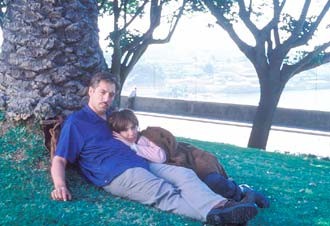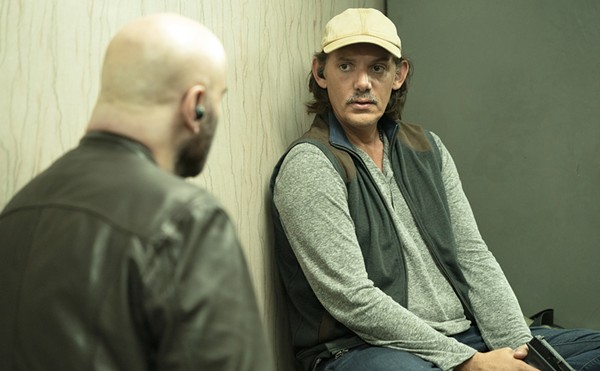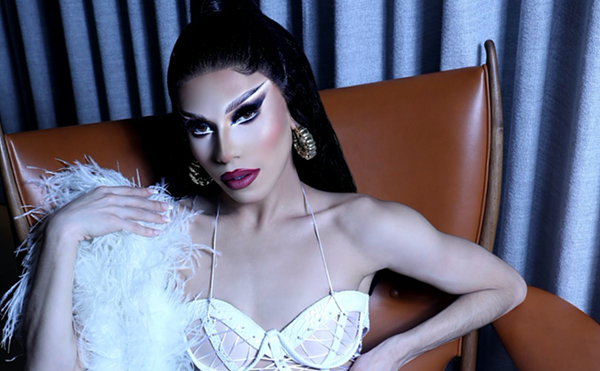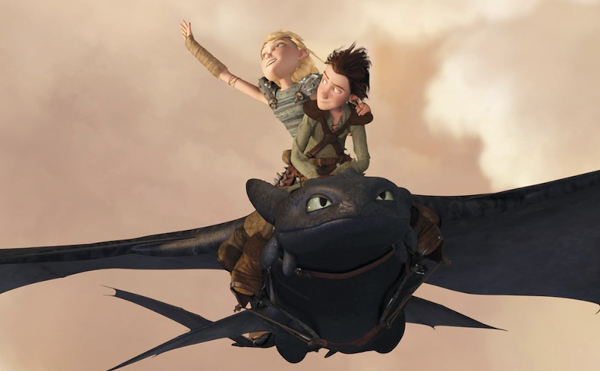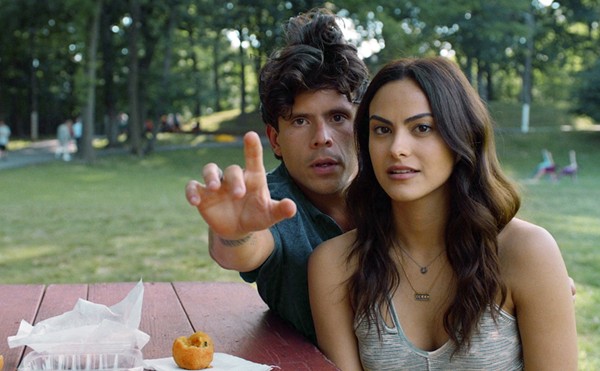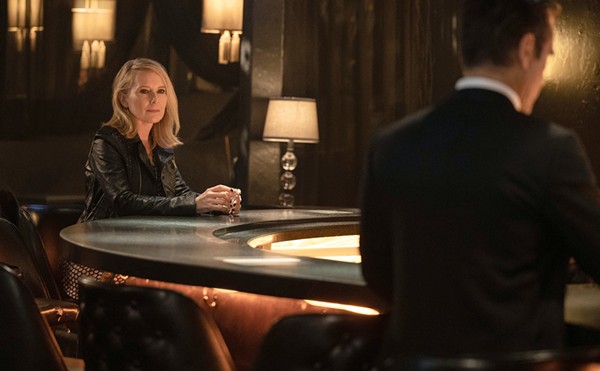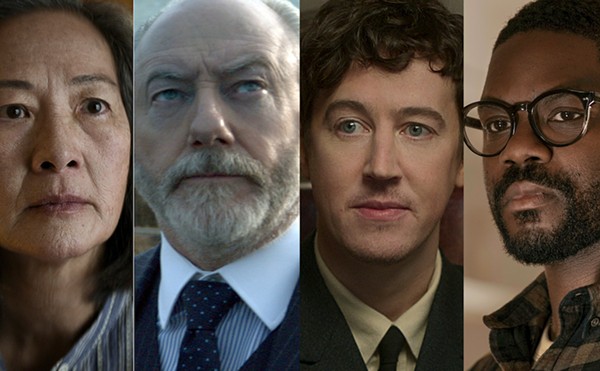'Latin America. The recent past." Although The Dancer Upstairs is inspired by events involving a specific terrorist group (called the Shining Path) in the country of Peru,
| Javier Bardem and Laura Morante in The Dancer Upstairs |
This lack of specificity has been a stumbling block for some viewers, but it's essential to the film's tone: While Malkovich acknowledges his affinity for the historically accurate political thrillers of Costa-Gavras (a videotape of State of Siege figures importantly in the action), what he is after is something slightly different. Dancer has the feel of a fable, a nocturnal glimpse at the connections between civilized life and bedlam, in which guerillas and soldiers alike can terrify a morally confused populace.
In the absence of a concrete setting, the film attaches itself to a single perspective: The magnetic Spanish actor Javier Bardem (Before Night Falls) plays Rejas, a police detective who was once an attorney but quit in search of "a more honest way to practice the law." We watch as Rejas encounters the first signs of terrorist activity - a dead dog dangles from a tall streetlamp, with dynamite stuffed in its mouth and a blood-scrawled message tied around its neck - and follow when, as symbolic gestures turn explosive, he starts pursuing the man behind them.
Amid the bloody Communist slogans that pop up with alarming frequency is the message "Long live President Ezequiel!" Rejas and his team begin to gather clues about this shadowy figure, but his movement has an inherent mystery about it: Ezequiel delivers no videotaped manifestos, has no apparent base of operations. Aside from gory posters, he does not commit his agenda to paper; the problem with texts, we learn, is that they "cannot answer ... cannot explain" a living philosophy. Ezequiel is everywhere, a creepy point driven home each night, with color-coded volleys of fireworks outside the city which appear to convey messages to his followers. When Rejas travels into the mountains in search of clues, peasants speak of the outlaw in cryptic poetry.
Rejas' investigation is hampered by the oversight of politicians and generals. When government officials begin to feel Ezequiel's wrath, the tanks come out; in this claustrophobic atmosphere,
| The Dancer Upstairs Dir. John Malkovich; writ. Nicholas Shakespeare; feat. Javier Bardem, Laura Morante, Juan Diego Botto, Elvira Mínguez, Alexandra Lencastre, Oliver Cotton, Luis Miguel Cintra, Abel Folk (R) |
Malkovich has long directed for the stage, and does not appear in this film. That alone should be enough to fend off concern that Dancer is in any way a vanity project. More important, though, is that the actor proves to be a natural behind the camera; the film's uneasy silences and slightly tweaked exchanges are a recognizable extension of the actor's unsettling onscreen persona, in the service of a story that needs this kind of edge. There are times at which the heavily accented English dialogue is difficult to catch; moreover, the script deliberately avoids spelling everything out. This actually serves the film, though. In fact, the story's least ambiguous sequence (a strange denouement in which Rejas' own fate is intertwined with the terrorists') is its weakest, exposing its characters to the harsh sunlight of real-world consequences.
The movie begins and ends with the voice of Nina Simone, who died just weeks ago. At its beginning, a car speeds along moonlit roads while the singer (recorded in concert) gives a long, rambling introduction to her next tune. One passenger asks why Simone is talking so much, and his companion replies that "she's getting ready to sing." Malkovich's directorial debut has been waiting in the wings for a long time, having been filmed well before history gave Americans a reason to notice terrorism again. But the actor didn't need any preamble to find his filmmaking voice; it's here from the first frame, as intelligent, provocative, and sensual as Simone's. •

